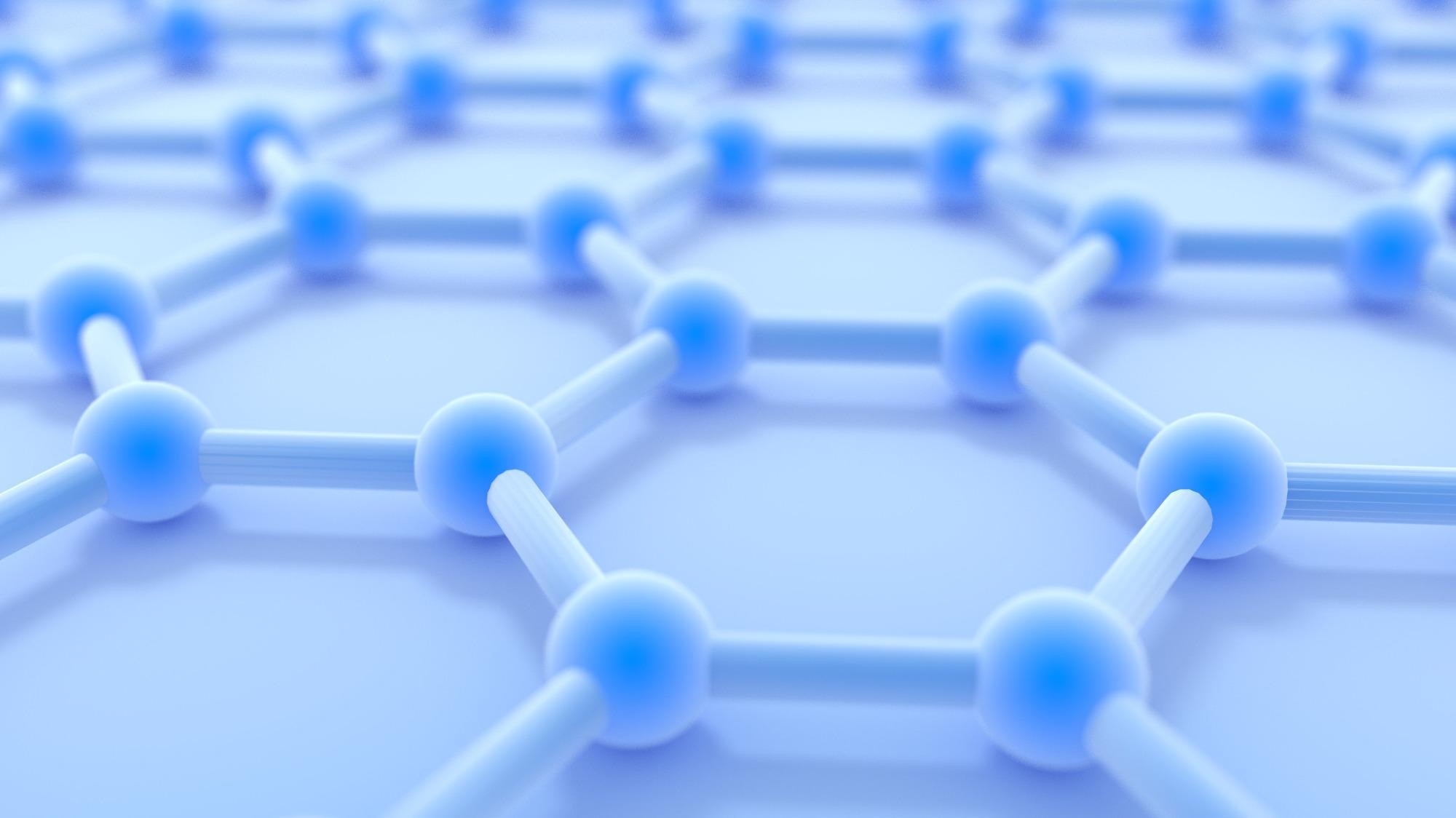A team of researchers from the United States, Japan and South Korea has doped a two-dimensional sheet of graphene using a monolayer of tungsten oxyselenide (TOS) by oxidizing a monolayer of tungsten diselenide. This TOS-doped graphene exhibits high optical transmittance and low insertion loss at telecommunications wavelengths.

Image Credit: Shutterstock.com/ James A Isbell
Doped graphene is showing great promise for next-generation optoelectronic applications. However, chemical doping cannot be precisely controlled, leading to disorders that diminish carrier mobility and conductivity in doped materials.
However, the interdisciplinary team’s approach results in a cleaner technique for controlling the flow of electricity in 2D graphene and paves the way for a revolution in quantum computing and telecommunications.
Doping: A Method to Control Conductivity
Semiconductors in their natural state (also called intrinsic semiconductors) are poor conductors of electricity. This is because electric currents rely on the free flow of electrons. Yet, semiconductor valence bands are filled, preventing electrons from flowing freely.
In doping, impurities are added to an intrinsic semiconductor to alter its electrical properties. As such, it is called an extrinsic semiconductor.
As an illustration, in an intrinsic semiconductor, such as silicon, atoms are bound together by strong covalent bonds to form a three-dimensional crystalline structure. Each silicon atom shares eight outer (or valence) electrons with its neighbor. Doping upsets these bonds and frees up charge carriers.
When introducing dopants with a higher number of valence electrons compared to the material being doped, there is a free flow of electrons (or negative charges), resulting in what is called an n-type semiconductor.
Conversely, when the valence electrons are fewer compared to the material being doped, there is a free flow of positively charged “holes” resulting in what are called p-type semiconductors.
The interdisciplinary team applied high-density p-type doping to a graphene monolayer through the medium of a tungsten oxyselenide (TOS) monolayer. The TOS monolayer was prepared by a UV–ozone oxidation of tungsten diselenide (WSe2) at room temperature.
This TOS monolayer displayed hole mobilities of 2000 cm2 V−1 s−1 resulting in a graphene resistance of 118 Ωsq−1. Yet, when the TOS was separated from the graphene by tungsten diselenide (WSe2), impurity scattering was reduced, and the graphene’s resistance dropped to 48 Ωsq−1.
Moreover, doped graphene is highly transparent in the infrared spectrum and displays close to ideal transmittance (99.2%) and low insertion loss (0.012dBμm−1). This promises ground-breaking applications in optical telecommunications.
Controlling Conductivity in 2D Graphene
Ever since graphene was first produced in 2004, over 2,500 layered (two-dimensional, atomically thin) applications of graphene-like materials have been introduced. These layered materials can be combined to form materials with unique electrical, chemical, optical and mechanical properties.
Such materials are called van der Waals heterostructures because their layers are not bound through a chemical reaction but a so-called weak van der Waals interaction. Due to this, these materials can be stacked in virtually limitless ways.
Thus, it is possible to assemble high-performance structures for specific purposes. This opens up the possibilities for extended functionalities in ultra-thin transistors and other optoelectronic devices.
The interdisciplinary team, including James Hone and James Teherani from Columbia University, and Won Jong Yoo from Sungkyungkwan University in South Korea, established a technique that dopes graphene via a charge-transfer layer compiled of high-purity tungsten oxyselenide (TOS).
Previous methods used impure materials in their charge-transfer layer and the graphene would become unevenly doped, impeding its ability to conduct electricity.
The team’s "clean" layer was created by oxidizing a monolayer (single atomic layer) of tungsten selenide (WSe2). When the “clean” tungsten oxyselenide (TOS) was layered on top of the graphene, it created positively charged “holes” in the graphene. These holes can then be manipulated to control the graphene’s conductivity.
Separating the graphene from the TOS enhanced the mobility of charge carriers further, to the extent where the effect of the TOS became almost negligible. This meant that the mobility of the charge carriers was almost entirely governed by the inherent properties of graphene.
Through such a blend of high mobility and high doping, graphene displays a higher conductivity than highly conductive metals, such as copper or gold.
This is a new way to tailor the properties of graphene on demand. We have just begun to explore the possibilities of this new technique.
Professor James Hone, Columbia University.
The team’s doped material has novel applications in photonic devices, transparent electronics, telecommunications systems, and quantum computers.
References and Further Reading
Choi, M. and Nipane, A., (2021) High carrier mobility in graphene doped using a monolayer of tungsten oxyselenide. Nature Electronics, [Online] Available at: https://doi.org/10.1038/s41928-021-00657-y
Geim, A. and Grigorieva, I., (2013) Van der Waals heterostructures. Nature, [Online] Available at: https://doi.org/10.1038/nature12385
Disclaimer: The views expressed here are those of the author expressed in their private capacity and do not necessarily represent the views of AZoM.com Limited T/A AZoNetwork the owner and operator of this website. This disclaimer forms part of the Terms and conditions of use of this website.